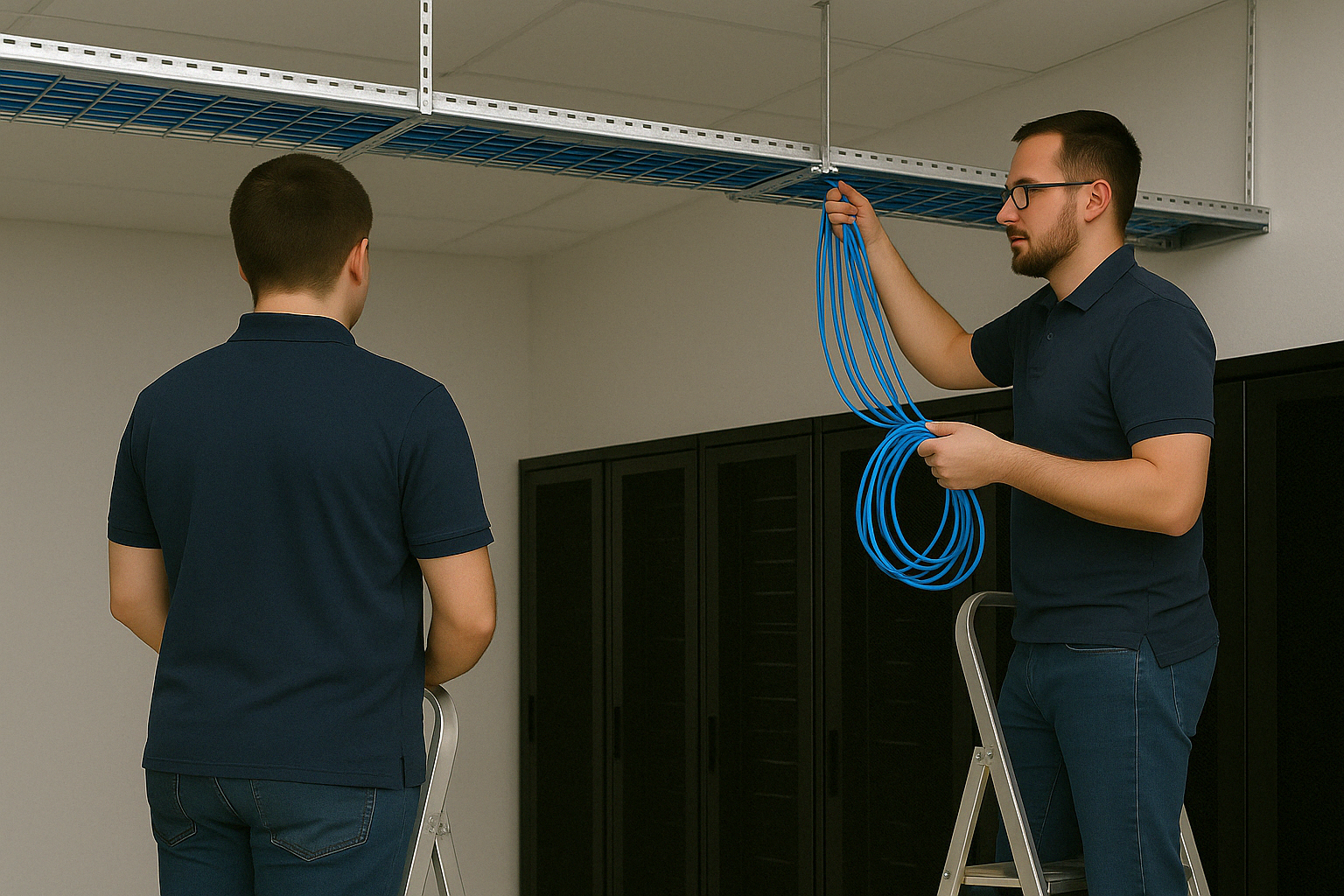Enterprise-level server room infrastructure operation and maintenance
Summary
We focus on ensuring the stability, security and efficiency of customers' IT system platforms. Whether it is the deployment of server equipment, network cabling, power supply system configuration, or the initialization of operating system and application environment, equipment inspection and firmware update, we use standardized, documented and automated operation and maintenance processes to help customers achieve the management goals of efficient system launch, stable operation and traceable problems, and build a solid and reliable technical foundation for enterprises.
Our service scope covers Frankfurt and the surrounding areas within 50 kilometers
- Digital Realty FRA1 - Hanauer Landstraße 302, 60314 Frankfurt am Main
- Equinix FR2 - Kruppstraße 121-127, 60388 Frankfurt am Main
- Equinix FR7 - Gutleutstraße 310, 60327 Frankfurt am Main
- NTT Frankfurt 1 Campus - Eschborner Landstraße 100, 60489 Frankfurt am Main
- NTT Frankfurt 2 Data Center - Hanauer Landstraße 320, 60314 Frankfurt am Main, Germany
- Maincubes FRA01 - Goethering 29, 63067 Offenbach am Main
- Iron Mountain FRA-2 - Heinrich-Lanz-Allee 47, 60437 Frankfurt am Main
- Telehouse Frankfurt - Kleyerstraße 79-89, 60326 Frankfurt am Main
- China Mobile International Frankfurt Data Center - Starkenburgstraße 12, 64546 Mörfelden-Walldorf
- Vantage Data Centers FRA2 - Alexander-von-Humboldt-Straße 4, 65479 Raunheim, Germany
- STACK Infrastructure FRAL1 - Sindlinger Weg, 65835 Liederbach am Taunus, Germany
- Data Castle Frankfurt 1 - Am Kronberger Hang 8, 65824 Schwalbach am Taunus, Germany
- Digital Realty FRA32 - Wilhelm-Fay-Straße 24b, 65936 Frankfurt am Main, Germany

Installation and racking of server equipment
1. Equipment acceptance and inventory: check the model, quantity, and check the integrity of the packaging and accessories.
2. Preparation before racking: plan the rack position and U position, prepare rails, tools and cable management accessories.
3. Install servers and accessories: fix rails, install servers, PDUs, power cables, etc.
4. Network and management interface connection: configure network ports, management interfaces, and standardize labeling.
5. Asset registration and identification: affix asset numbers, register IP and usage, and enter asset management systems.
6. Power-on test and configuration: start the device, check the operating status, and complete BIOS and RAID settings.
7. Cable organization and record filing: beautify the cable organization, take photos and archive them for easy subsequent maintenance.

Cabinet and network connection management
1. Network topology planning: Design the network structure according to business needs, and divide the core, aggregation and access layers.
2. Network device connection: Connect physical ports such as servers, switches, management interfaces, and KVM.
3. Patch cord arrangement and labeling: Unify the color and length of patch cords, and label them to clarify the corresponding relationship between ports.
4. Fiber and network cable layout: Lay out fiber and network cables according to bandwidth requirements, and complete termination, testing and other tasks.
5. VLAN and IP address configuration: Divide VLANs according to department and security requirements, and assign static IPs.
6. Patch panels and cable management systems: Use cable management racks and cable ties to keep wiring neat and tidy for easy maintenance.
7. Network connectivity test: Use a tester to detect line connectivity and stability to ensure network reliability.

Power and UPS Management
1. Configure PDU power distribution unit: Connect the server power supply to PDU to distribute the load reasonably and prevent overload.
2. UPS system access: Connect the server and core equipment to UPS to ensure normal operation in the event of a power outage.
3. Power load assessment and grouping: divide the power supply according to the power demand and balance the power supply efficiency.
4. UPS battery inspection and replacement: regularly check the battery voltage, temperature and aging status, and replace it in time to ensure power supply.
5. Power path redundancy design: adopt a dual-power supply architecture to prevent single-point failure from causing equipment downtime.
6. Power monitoring system access: install smart meters and monitoring modules to monitor current, voltage and temperature in real time.
7. Emergency drills and power outage tests: regularly perform simulated power outage drills to verify the UPS and backup power supply switching mechanism.

System deployment and configuration
1. Operating system installation: Deploy Windows Server, Linux and other system versions according to project requirements.
2. RAID and disk partition configuration: Set up RAID arrays, logical partitions and mount points to improve data reliability.
3. Network settings: configure static IP address, gateway, DNS, and bind to the corresponding port of the switch.
4. User rights management: create administrators and ordinary users, set operation permissions and remote access policies.
5. Application and service deployment: install Web servers (such as IIS, Nginx), databases (such as MySQL, MSSQL).
6. Security reinforcement and firewall policies: close unnecessary ports, set access control and basic intrusion protection.
7. System initialization scripts and automated configuration: use scripts such as Shell and PowerShell to improve deployment efficiency.

Daily inspection of servers and network equipment
1. Inspection plan formulation: formulate regular inspection cycles and task lists based on equipment type and importance.
2. Server operation status inspection: check the operation indicators and logs of CPU, memory, hard disk, fan, etc.
3. Network equipment inspection: Check switch ports, link status, packet loss and configuration consistency.
4. Temperature and humidity environment monitoring: Use sensors to check whether the temperature and humidity in the computer room are within a reasonable range.
5. Power and UPS status check: Confirm whether the PDU and UPS indicators and alarm status are normal.
6. Inspection record archiving: Each inspection generates a report, and the problem is marked and handed over to operation and maintenance for processing.
7. Abnormal warning analysis: Combine logs and monitoring systems to predict and respond to potential failures.

Firmware and system updates
1. Firmware version inventory: Regularly check the firmware versions of the motherboard, RAID card, network card, BMC, etc.
2. Download and verify the manufacturer's update package: Get the latest firmware for the corresponding device model from the official website and verify the hash value.
3. Pre-upgrade backup and risk assessment: Back up key system configurations and data, and assess update risks.
4. Batch firmware upgrade execution: Use vendor tools (such as iDRAC, ILO) to uniformly upgrade firmware in batches.
5. Operating system patch updates: Distribute update packages uniformly through WSUS or Linux package management tools.
6. Post-update verification and rollback check: Verify the system operation status, and roll back the version if there is an abnormality.
7. Update log and change archive: Record all update content, version numbers, and executors for easy audit tracking.